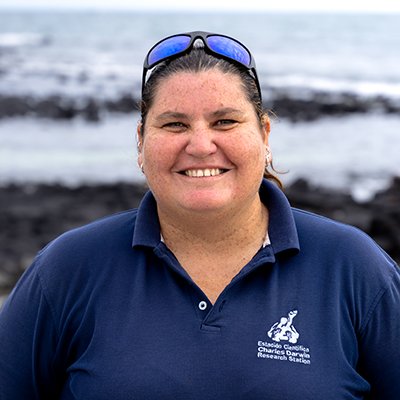
A team of expert scientists embarked on the M/V Queen Mabel this April to Darwin and Wolf to conduct surveys and asses the current state of the coral reefs of the northern part of the archipelago and continue the research on marine invasive species in the Galapagos Marine Reserve (GMR).
The Marine Invasive project is led by Dr Inti Keith from the Charles Darwin Foundation in collaboration with the Galapagos National Park Directorate (GNPD), the Galapagos Biosecurity Agency (ABG), The Ecuadorian Navy and their Oceanographic department (INOCAR). Scientists from the Charles Darwin Foundation (CDF), University of Southampton, Nova Southeastern University and the Institute for Tropical Marine Ecology got together to study the green algae Caulerpa sp. that is growing on the coral reefs and evaluate the general health of the reefs at Darwin and Wolf.
The team deployed several 50m transects along the seabed and conducted several activities:
- Percentage cover of Caulerpa sp. using quadrants along the transects
- Biodiversity census (fish, macroinvertebrates and sessile organisms)
- Temperature, currents, wave action and visibility parameters were taken
- Changed temperature loggers form the previous expedition
- Created 3D models of the reef in order to measure growth

The preliminary results from this expedition show that the coral reefs in Darwin and Wolf are in good condition and several recruits were observed. However important parts of the reef in Darwin have been affected by the growth of Caulerpa sp. which appears to be competing with the native sessile communities. The team observed small corals (Porites lobata and, frequently, Tubastrea coccinea) to be totally overgrown by Caulerpa. Porites lobata recruits, when overgrown, tended to lose all colour and could therefore be expected to die. Tubastrea coccinea showed no visible reaction to being overgrown, probably due to the azooxanthellate and therefore unaffected by shading.
The team did not observe an increase in mortality of medium and large sized corals in comparison to the previous monitoring periods. Overall, the health of the larger coral size classes was excellent, and also many recruits were observed in several areas of the reef. Thus, it appears that the life-dynamics of stony corals at Darwin has not yet been negatively affected by either Caulerpa sp. or other stress-factors, such as high temperatures.
Some instances of slight bleaching were observed, but these did not correlate to unusually high temperatures (which were not observed) and were patchy and isolated in distribution. Similar to the previous expedition, the team found several patched of Caulerpa sp. growing on the coral reef at Wolf. However, there was no evidence of Caulerpa overgrowing corals in Wolf; what was noticeable was the competition with other algae species present on the reef, so it is important to maintain a close watch on the reef system of Wolf.
Additionally, photogrammetry was conducted on several reef systems in order to create 3D models of the system and its surroundings in order to be able to measure the growth of Caulerpa over a period of time. This methodology can also be used to measure coral growth, bleaching and diseases over time. The data from the photogrammetry will be processed and 3D models created which will allow the team to analyse the results in order to proceed with this methodology in the near future.
This project has been made possible thanks to the support of our generous donors: Galapagos Conservancy, the Leona M. and Harry B. Helmsley Charitable Trust, Lindblad Expeditions - National Geographic Fund, and Dr. Ken Collins and Ms. Jenny Mallinson.
This is one of the Charles Darwin Foundation’s many projects in Galapagos and we depend entirely on the generosity of our supporters. Please donate today to support our work with marine invasive species.







